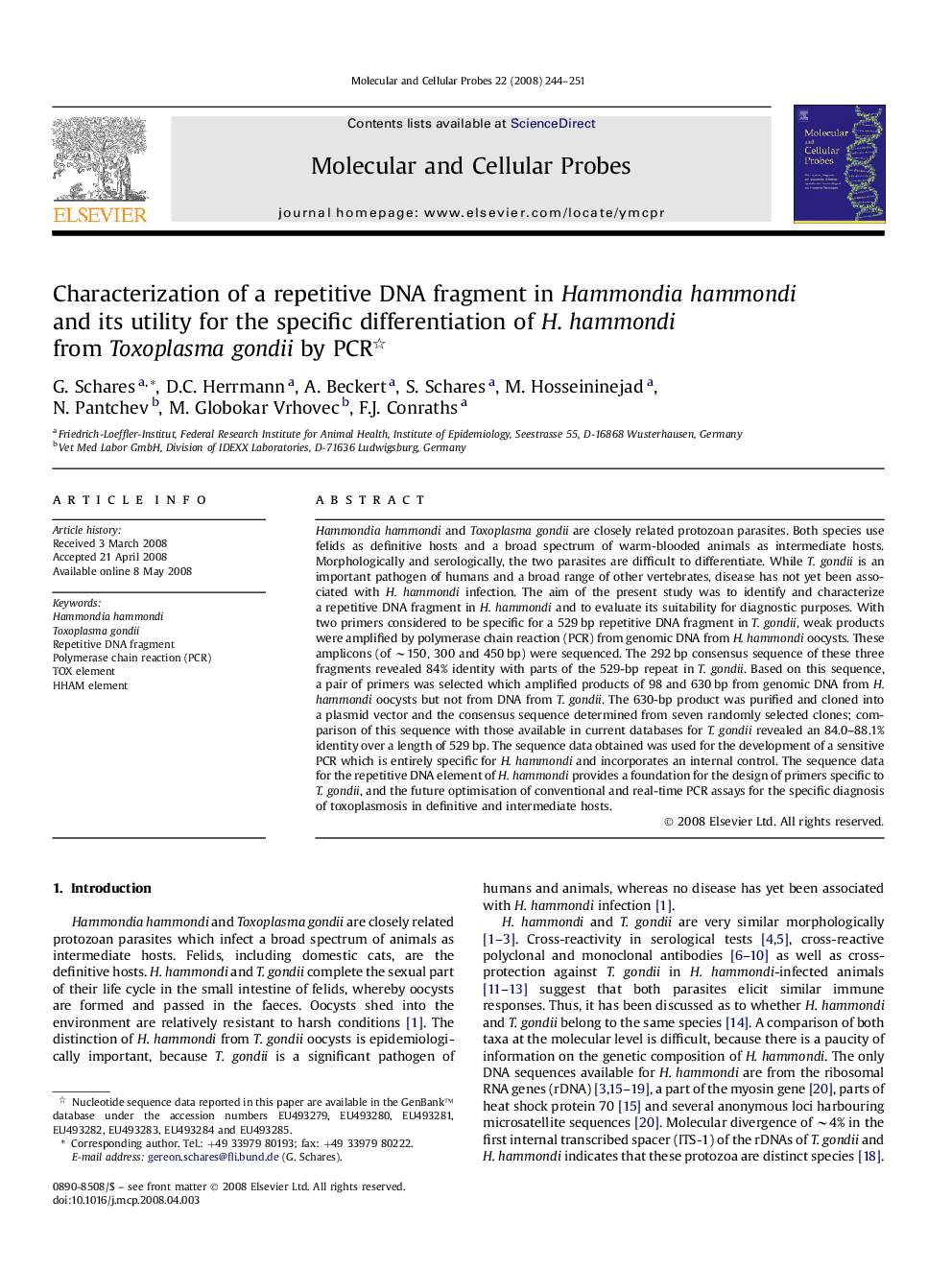| Article ID | Journal | Published Year | Pages | File Type |
|---|---|---|---|---|
| 2200068 | Molecular and Cellular Probes | 2008 | 8 Pages |
Hammondia hammondi and Toxoplasma gondii are closely related protozoan parasites. Both species use felids as definitive hosts and a broad spectrum of warm-blooded animals as intermediate hosts. Morphologically and serologically, the two parasites are difficult to differentiate. While T. gondii is an important pathogen of humans and a broad range of other vertebrates, disease has not yet been associated with H. hammondi infection. The aim of the present study was to identify and characterize a repetitive DNA fragment in H. hammondi and to evaluate its suitability for diagnostic purposes. With two primers considered to be specific for a 529 bp repetitive DNA fragment in T. gondii, weak products were amplified by polymerase chain reaction (PCR) from genomic DNA from H. hammondi oocysts. These amplicons (of ∼150, 300 and 450 bp) were sequenced. The 292 bp consensus sequence of these three fragments revealed 84% identity with parts of the 529-bp repeat in T. gondii. Based on this sequence, a pair of primers was selected which amplified products of 98 and 630 bp from genomic DNA from H. hammondi oocysts but not from DNA from T. gondii. The 630-bp product was purified and cloned into a plasmid vector and the consensus sequence determined from seven randomly selected clones; comparison of this sequence with those available in current databases for T. gondii revealed an 84.0–88.1% identity over a length of 529 bp. The sequence data obtained was used for the development of a sensitive PCR which is entirely specific for H. hammondi and incorporates an internal control. The sequence data for the repetitive DNA element of H. hammondi provides a foundation for the design of primers specific to T. gondii, and the future optimisation of conventional and real-time PCR assays for the specific diagnosis of toxoplasmosis in definitive and intermediate hosts.
